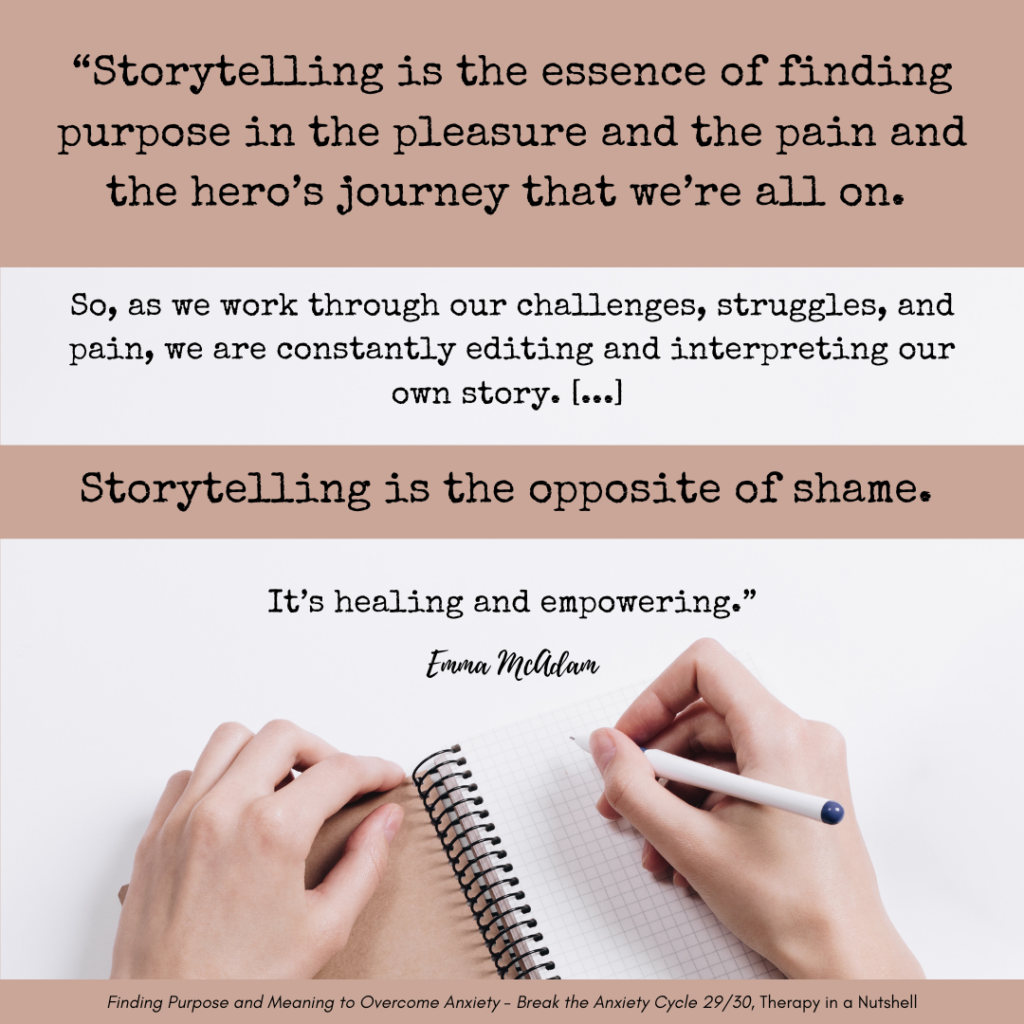The Two Basic Stories You Can Tell
Over the past few years, I’ve been checking out a lot of psychology books, as well as videos online, as mental health has become one of my primary focuses. I’ve incorporated what I’ve learned wherever I can in my writing.
One of my favorite channels on YouTube is Therapy in a Nutshell with licensed therapist Emma McAdam. She has a full range of courses to go along with her content, but she stands out for the way she makes more complex psychological topics relatable and easy to digest. The resources and strategies she recommends are always accessible.
The main narrative options
McAdam has a series about conquering anxiety. You might not expect that type of series to hold a pearl of a thought about narrative and storytelling. But smack in the middle of one of the videos, McAdam explains that there are two basic stories you can tell others.
Redemptive stories — connects the dots of events to reveal the good or what has been learned or conquered through challenges
Contamination stories — shows how events have caused suffering and prevented success
Applying the categorization
McAdam goes on to explain that we all have a choice about the narrative that we create. She challenges viewers to consider the meaning they take from the events in their lives and to try to lean toward a more redemptive narrative that can support joy.
From the psychology perspective, McAdam’s goal is to help people explore and challenges the perspective they have around what they’ve been through. She even notes that memoir writing can be transformative because of that exploration.
But McAdam’s categorization can broadly apply to most fiction writing, as well. Traditional hero’s journey stories where the protagonist emerges victorious are redemptive, whereas most other stories where there isn’t a happy ending (i.e., the classic tragedy) can be considered tales of contamination. Stories can keep readers’ attention when the categorization is clear, but you also can heighten interest by using elements of both to create suspense — that is, to make it uncertain what side the protagonist will end up on.
Storytelling is the opposite of shame
Sticking with McAdam’s psychology focus and the concept around memoir-oriented work, however, McAdam ended a section of her video with the following statement:
“Storytelling is the essence of finding purpose in the pleasure and the pain and the hero’s journey that we’re all on. So, as we work through our challenges, struggles, and pain, we are constantly editing and interpreting our own story. […] Storytelling is the opposite of shame.”

I challenge you to find a more powerful statement about writing anywhere.
Storytelling is the opposite of shame.
I thought a long time about that single sentence. And the truth I can share about it is that, as you release shame you have, even shame you might have struggled to consciously acknowledge has been present, the confidence to put more into words grows. The more shame dies, the freer you feel to tell the story, however messy it might be.
The takeaway? If you want to write well, you can’t hold on to shame, because shame serves as a gag and keeps you quiet. It prevents you from expressing not only the nuts and bolts of events, but the emotion and sensory beauty and pain that colors them. Work with a therapist. Talk with friends. Do whatever you have to do. But to McAdam’s point, remember that your narrative is yours. Focus on connecting the dots in positive ways and heal where you must. You might find that every other story you want to tell is better because of it.